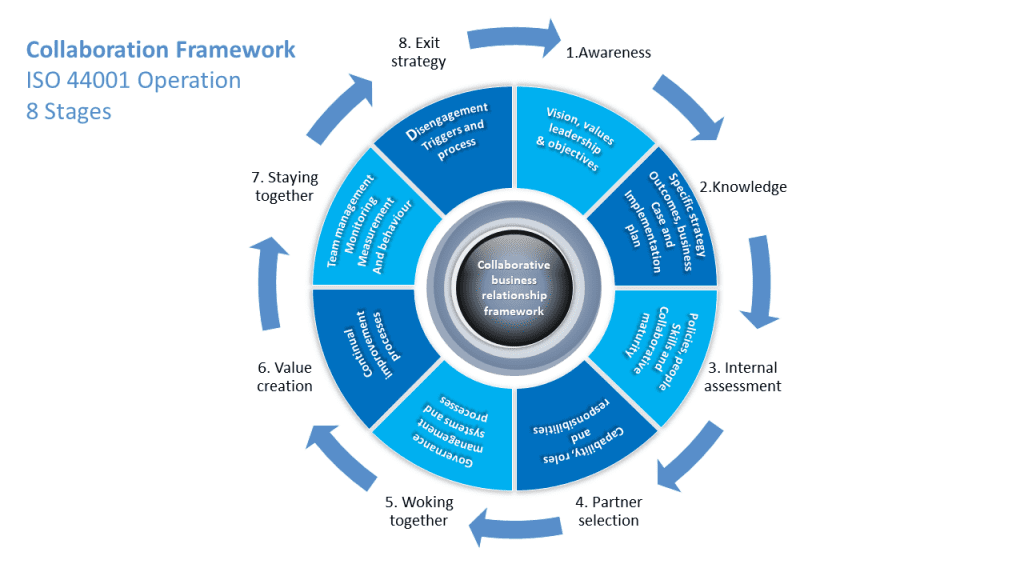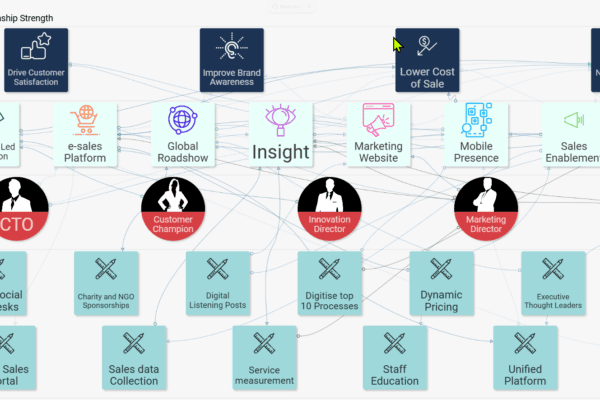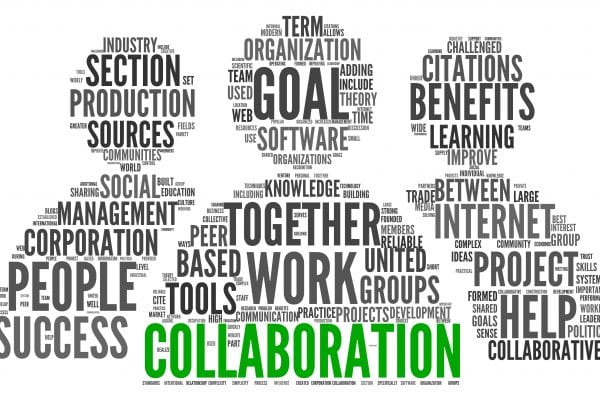Uncover the 4 levels of collaboration in your business to help create collaborative business relationships and increase profits for you and your business partners.
There are different types of collaboration that are typically performed at 4 levels within your business:
- Project and Workplace collaboration: This is very much based around completing defined tasks in a set period of time with hopefully agreed outcomes and is typically collaboration work that you have to engage with and complete.
- Function and Group collaboration: This is more about best practices and ways of working, providing information and insight into how your function, group operates and it is your choice whether you participate or not
- Organisation collaboration: Having collaboration take place in teams and functions is good but the knowledge and insight remain in these “silos”. Organisational collaboration helps organisations to “connect and communicate” these silos of collaboration to enable you and your organisation to share, innovate and become more profitable.
- External Collaboration: This is similar to organisational collaboration even to the point where collaboration is occurring globally. The key difference is the that it is collaboration outside the “organisations logical boundaries”; it is beyond the infamous firewall. Collaborative relationships and partnering with other organizations and businesses is becoming the norm and there fore must be easy and natural to complete.
Business to Business Collaboration
Key to any form of collaboration is the culture of your business and the willingness of your people to engage. Getting this to work internally in your organisation can be challenging enough, especially if you are geographically distributed in different countries. Working collaboratively with other businesses on a project or as part of ongoing business can be even more challenging.
What is required is a framework that most people will understand and hopefully buy into.
BS 11000 is a framework that you can start using to help your business collaborate better both internally and externally. Although it may seem just a checklist (which it is) at first glance and may appear to try and systematise what after all, is a business activity that is depndant on people interacting and working together, it does cover the four value creating aspects of any business, which are:
- Organisation – Leadership; Culture; Teamwork and Alignment
- People – Skills; Training and Knowledge
- Information Technology (IT) – Systems; Databases and Networks
- Internal Management Processes – Operations; Customers/Partners; Innovation and Regulatory & Social
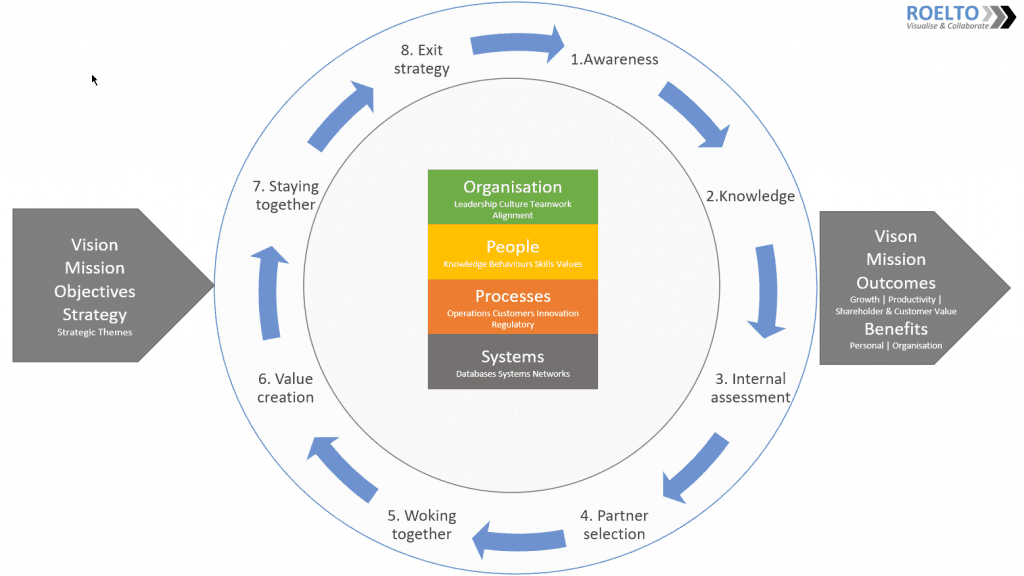
ISO 44001 Collaboration Framework – improved business collaboration relationships
The 8 stages of ISO 44001 takes you through a relatively easy and logical process which is really important if collaboration is new to you or if you are embarking on working strategically with other businesses in a strategic partnership.
By simply completing a collaboration gap analysis within your own team, group and organisation can help you to improve your internal collaboration. This will also help you to think about how you may look to a potential strategic partner, what you need to improve and how you would collaborate together for mutual benefit.
Developing a collaborative business relationship is not an overnight quick fix, but using such a framework as ISO 44001 can help you and your potential business partners discover the most natural way for you to both do business in an open and transparent way.
Having an independent and objective process can help remove the “not made here” issue through co creating (teamwork) and helps to establish trust and alignment between two organisations’
Gaining knowledge about your organisation will help to identify your existing skills and competencies of the people who will be collaborating and what additional development and training will they need.
People working together collaboratively is more about the people, but having the necessary systems and networks in place can facilitate collaboration and communication. It can also help identify what data (databases) , information and knowledge can and cannot be shared.
Finally, the internal management processes to engage and manage your collaborative working relationships will to a large extent already exist in the form of Project Management, Risk Management, Knowledge management and other business processes.
Capturing your collaboration strategy into a corporate Relationship Management Plan (RMP) for example, can reference to these other management processes to help reduce the amount of time and effort to develop your collaboration process. It can also act as a collaboration RMP template when establishing strategic collaboration relationships with other organisations.
The slides above show how you can use the ISO 44001 collaboration framework to develop an integrated and aligned collaboration approach in your business and with partners
Getting started with ISO 44001
Performing a Gap Analysis of your current collaboration capability at the 4 business levels identified earlier, will help you to easily plan and navigate your next steps to improving your collaboration and better prepare your self when collaborating with other businesses and organisations, no matter where they are or how large or small they are.
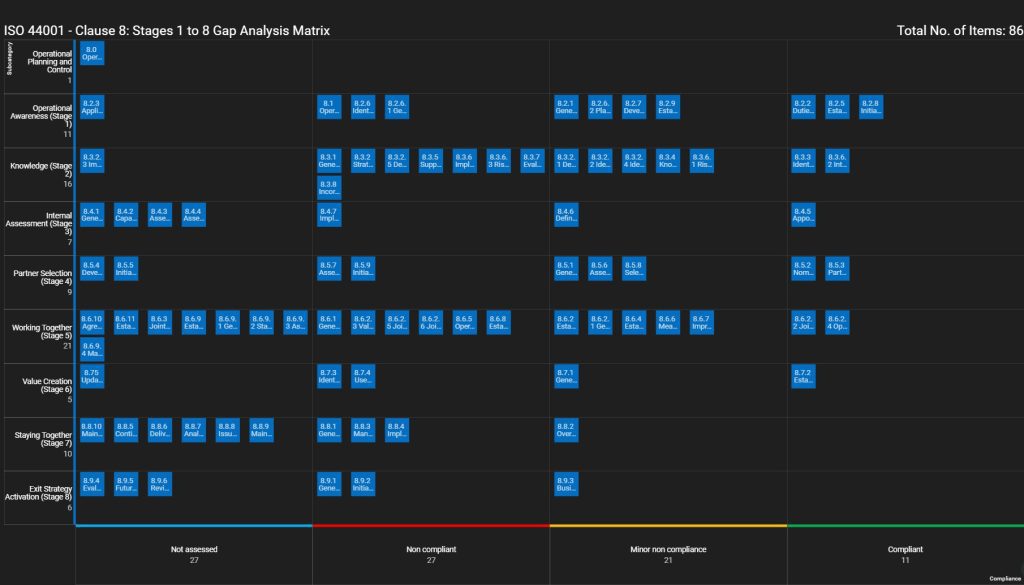
ISO Collaboration Gap Analysis
To get started click the orange button below “Start GAP Analysis” answer the few questions, leave your details and click the link at the end to set up your ISO 44001 Collaboration GAP Analysis to start improving your business to business collaboration and increasing your profits.
Keep on collaborating!
Jason


